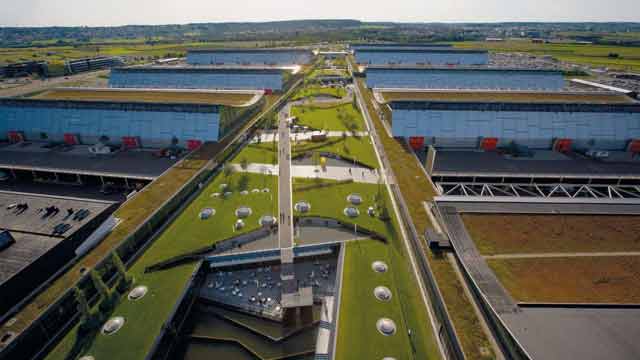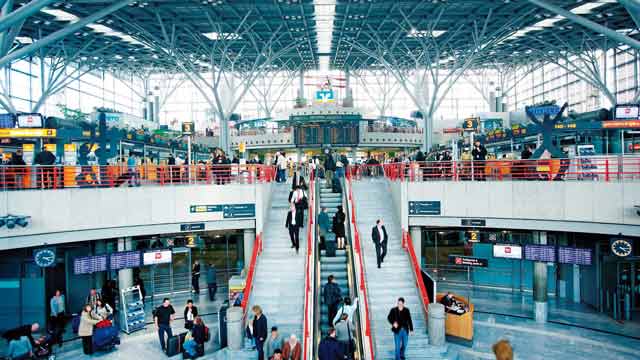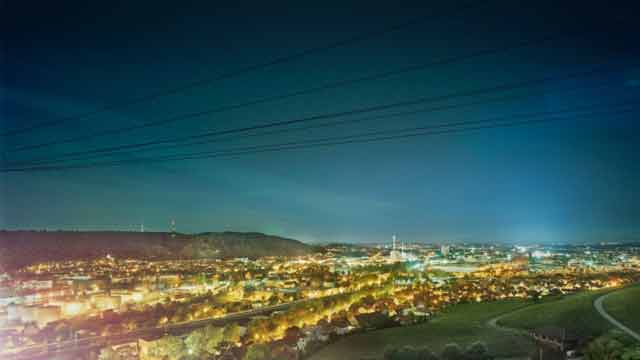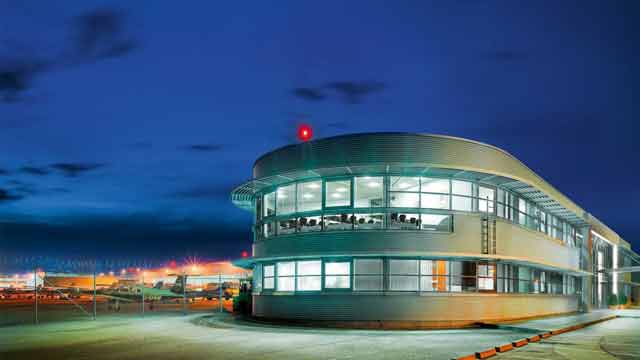Embracing
the Industrial
Revolution
4.0
Smart Grids
Modern technology and the smart use of energy and natural resources are the basis for cities where people will enjoy living in the future.
iMobility
Intelligent self-learning systems are going to radically change the way we live, work and travel.
Enchanted objects
Life without a smartphone – it‘s a no-go. It has made life easier and more convenient. However, in the future it will be just one of many smart devices that will control and ease daily life. The line between the real and virtual world is blurring, and soon other everyday devices will be equipped with sensors and processors – or they are already.
App-controlled kettles boil the water for your morning tea while you’re still in the shower, the fridge notices that you‘re low on butter so orders more. Your autonomous electric car finds its own way to your workplace and the underground car park is used down to the last centimetre because remote-controlled cars can be piloted into the narrowest of spaces.
In the age of the Internet of Things, devices are no longer controlled by their owners. They can act independently, because they are networked, swap data and communicate with one another. The US researcher David Rose from Massachusetts Institute of Technology (MIT) even goes so far as to call them enchanted objects.
When a weather station issues a storm warning and the awning over the terrace runs back in by itself, then machine-to-machine communication has worked well – as if by magic the awning has done the right thing in the situation. The region is also developing intelligent systems for the future: Initiated at the end of 2016, the Cyber Valley cooperation, which dovetails the worlds of science and industry, pools international research activities in the eld of artificial intelligence. Aside from setting up research groups, the aim is also to support start-ups that will turn fundamental research into marketable applications.
While the “enchantment” of devices in daily use is still in the cradle, networking systems has already revolutionised industrial production: the fourth Industrial Revolution is already well underway. At the end of the 18th century, the steam engine heralded the Industrial Age, the production line at the beginning of the 20th century led to the second Industrial Revolution and a dramatic reduction in production costs, and then from the 1960s onwards, the computer was used to control production systems, thus ringing in the Digital Age.
The Industrial Revolution 4.0 now networks machines and the people who work with them to enable more flexible and efficient production. Customer requirements also play a key role in Industry 4.0: for thanks to data exchange and inter-machine communication, companies can now deliver customised products more easily than before.
Spearheading the introduction of Industry 4.0 is the automotive and components industry. More than 20 projects in the Stuttgart focus on the digital restructuring of production processes as shown by the interactive map on the Industry 4.0 platform, which is a national initiative headed by the Ministries for Economic Affairs and Research and Technology. The Stuttgart economic area is thus the country’s major hub of Industry 4.0. Not only industrial giants like Daimler or Bosch, but also many SMEs are exploring new avenues in the controlling and exibilisation of production processes.
The APAS assistant is the first robot assistant system certified for contact-free collaboration between man and machine.
Intelligent cities –
future cities offering quality of life
Modern technology and the smart use of energy and natural resources are the basis for cities where people will enjoy living in the future. Smart ideas for pushing ahead with the energy transition also come from the region.
In mediaeval times, they used to say that city air made you free. Though nowadays, city air is often thick, urban centres are still as attractive as ever. 70 per cent of the German population lives in cities. But what will future cities look like? The Fraunhofer Society and partners from industry and town councils are working on solutions for the city of the future. The “Morgenstadt: City Insights” initiative and its research projects, events and congresses focus on a sustainable approach to natural resources in urban areas. Networked technologies and the avoidance of social cleavage processes are the pillars on which shaping the sustainable liveable cities of the future are built. Reflections on tomorrow’s city covers many areas: handling waste and energy, water supplying and waste water disposal, a modern administration that integrates citizens’ interests into participatory processes, avoidance of a massive traf c gridlock by taking into account all forms of mobility, energy efficiency in buildings. An example of sustainable building in a smart city is shown by the Weissenhof Estate in Stuttgart: Building B10 by Werner Sobek
“Successfully implemented smart city concepts from Baden- Württemberg are in high demand abroad: our FutureCitiesBW initiative promotes knowledge transfer between local industry and interested parties in foreign markets.”

Susanne Schatzinger
Coordinator FutureCitiesBW,
Fraunhofer IAO
The digitisation of devices from thermostats to dishwashers is a huge opportunity for controlling urban systems: for analysing and consolidating citizens’ individual energy consumption in a city can be used as the basis for modern solutions. Mannheim explored future power grids to bring together producers and consumers with the help of modern information and communication technology in a lighthouse project that ran for several years, for instance. One of the results was the “energy butler”, a tiny device with a huge impact: consumers used it shift power consumption to periods in which a lot of the energy fed into the grid was from renewable sources. So washing machines were set to start automatically during those periods, for instance.
The Smart Grids Baden-Württemberg platform is aimed at promoting smart power grids and related products and services. Chairman of the Board of Directors Prof. Stefan Tenbohlen, Head of the Institute of Power Transmission and High Voltage Technology at Stuttgart University comments on the subject: “Besides gaining acceptance, we also need to solve many technical challenges to successfully shape the energy transition. A key aspect of our research projects is integrating fluctuating producers like photovoltaic plants or wind power into the grid. Smart grids are an essential part of this endeavour.” More information about power supplying of the future can be found on the platform about the various projects all over Baden-Württemberg: Profiles of the local project owners and systems on the smart grids route are included on the platform. They all do their part to ensure that the lights won’t go out in the climate-neutral city of the future.

Landesmesse Stuttgart GmbH












